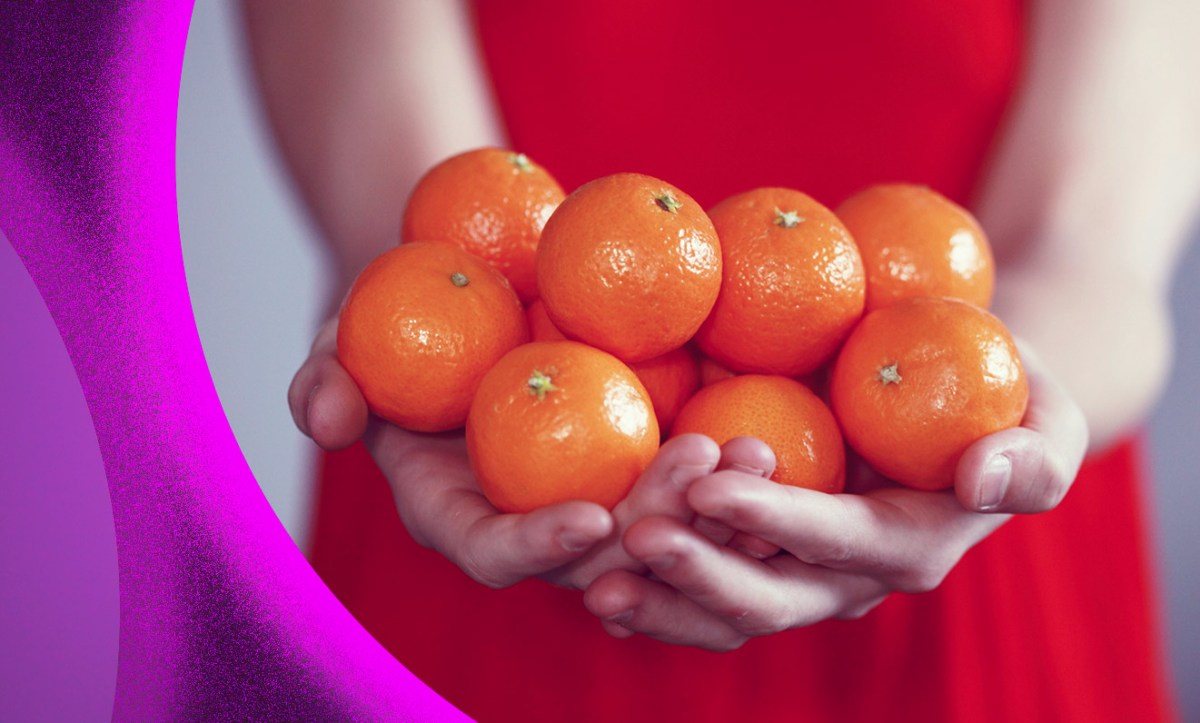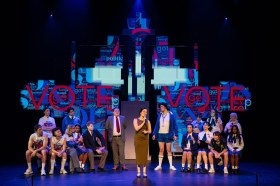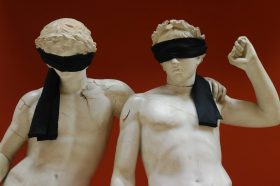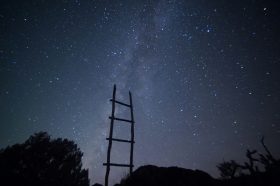In this FREE journey to creative recovery, we’re following Julia Cameron’s bestselling creativity self-help manual, The Artist’s Way, tracing the book’s 12-week program with a series of inspiring ArtsHub articles, resources and ideas for artist date activities. There’s also a Facebook community group you can join for discussion and support.
To recap, the idea with The Artist’s Way is to commit yourself to a structured creative recovery that will spark joy, remove blocks and build the confidence to play and take risks – whether you’re a professional artist or not. The main tools of the course are Morning Pages and Artist Dates. You can read previous articles here:
- Introduction: an invitation to change your life
- Week 1: Recovering a sense of safety
- Week 2: Recovering a sense of identity
- Week 3: Recovering a sense of power
- Week 4: Recovering a sense of integrity
- Week 5: Recovering a sense of possibility
Or you can jump right in and follow along, wherever you are in the process. Grab a copy of the book, start reading and look out for ArtsHub’s weekly articles, published each Monday.
Keep up to date with The Artist’s Way series here
Week 6: God, money, luxury and creative abundance
Whether you have a lot of it, or a little, talking about money is complicated. It’s bound up in shame and guilt, because we’re never just talking about money, but about values – what matters, what counts and what you’re worth.
When I undertook The Artist’s Way program a couple of years ago, this was the chapter that challenged me most, especially the Money Madness exercise that required quick answers to phrases like:
- People with money are…
- In my family, money caused…
- I’m afraid that if I had money I would…
- If I could afford it, I’d…
These kinds of questions forced me to examine my underlying beliefs, and how they were affecting my creativity, career decisions and expectations for what was achievable for “someone like me”.
There were some nasty little demons lurking in my wallet – and in my family of origin.
I grew up in genteel poverty, well-provided for, but having to count every cent and measure every purchase against all the options. I heard my parents debating about finances late into the night. I shut my ears and vowed to live a life that involved thinking about money as little as possible.
Because my parents were missionaries, we lived in developing countries for much of my childhood. In relative terms, we were rich beyond the imaginings of most people in the Pacific Islands, who had little access to higher education, medical care or luxuries like a car. So I knew that it was pure greed and avarice to want more than a very modest life.
In some ways, I still believe this. The world would be a better place if we shared the wealth around and could all settle for a simpler, less materialistic way of being. But I’m also aware, now, of how modest expectations and penny-pinching tendencies can open those of us in the arts up to exploitation, low wages and keeping aspirations very humble.
One of the blessings of my childhood was having a mother who loved beauty, music and the small luxuries that make you feel rich – like fresh flowers on the table, candles on Friday night and a fancy dress from the op-shop. Mum lived her own unique gospel: that having time to oneself, outside the paid workforce, was an essential ingredient for a sane life – especially for those of us who need lots of quiet time.
Being numerically illiterate, learning how to count has been a big lesson for me. I’m still working on it. But this time around with The Artist’s Way, I can see the progress I’m making. I managed to save up and scrimp to take a year off paid work to finish my novel. And while I may never pay off my HECs debt or have enough superannuation, these are the choices I’ve made, for better or for worse, and at least now I can look them in the face and own them.
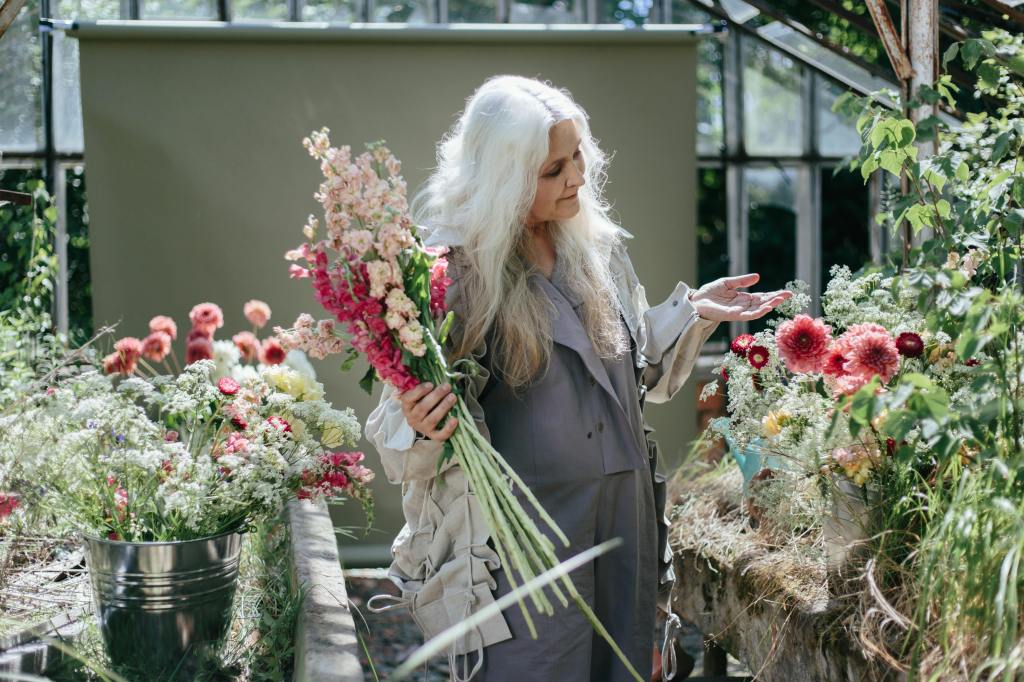
Is God too good for money?
Julia Cameron asks us this week if we believe that God is good – too good to think about money – while also believing that money is bad. What a conundrum, and no wonder so many of us are conflicted.
The Bible teaches that the love of money is the root of all evil. We should consider the lilies of the valley – they don’t worry about how they’re going to feed or clothe themselves. Meanwhile, the Protestant work ethic teaches that hard work is the ultimate virtue, and that being an artist hardly equates with “work”, unless it looks like a particular form of driven workaholism.
Cameron writes, ‘We cling to our financial concern as a way to avoid not only our art, but also our spiritual growth. Our faith is in the dollar.’
She says, ‘Most of us harbour a secret belief that work has to be work and not play, and that anything we really want to do – like write, act, dance – must be considered frivolous and be placed a distant second.’
She likens this to thinking about God as a stern parent with rigid ideas about what’s good for us, and asks us to imagine instead that God (or Goddess, or Life Force) actually wants us to do the things we love, with the minimum of drudgery, and with a sense of abundance, extravagance and prosperity.
Read: We need to talk about money in the arts
At ArtsHub we know that whenever we publish a practical story about money, taxes or building a business, our readers are interested. After all, artists can be the ultimate entrepreneurs and creativity and money-making can go together, hand in glove.
But for many of us, if we dig a little deeper, we may find some hidden toxic beliefs about money and art. Read the list below and see if any ring true.
- Artists are always broke.
- Real artists are crazy and irresponsible.
- Creative people aren’t good at managing money.
- Creative people aren’t good at maths or numbers of any kind.
- Being poor is romantic and virtuous.
- Having a vocation means accepting poverty and precarious employment.
- Pain creates better art – suffering and creativity go together like love and marriage.
- You’re lucky to be paid anything at all in the arts.
- Other people manage, so there’s something wrong with me if I can’t get ahead.
- Talking about money is rude or embarrassing, and asking for more money is greedy and selfish.
- Investing in my creative pursuits is selfish and wasteful.
What if the opposite of these statements was true? That artists can be sane, responsible, savvy and secure – whether or not they make their living from their art.
Luxury
This week, Cameron wants us to imagine a more generous God and to challenge our own sense of stinginess or ‘artistic anorexia’. A little authentic luxury goes a long way, she says, to foster this sense of expansion.
Authentic luxury has nothing to do with fancy cars, designer duds or fine dining – although in certain cases, why not? It can be as simple as a secondhand coat that makes you feel like a movie star, or some art supplies that aren’t budget range. It may mean splurging on a punnet of raspberries or a lavish bunch of flowers, just because peonies are the ones you want, and not the half-dead ones on sale.
What are the purchases that truly bring you joy? Can you treat yourself to something “just because” and not because of any other reason? By doing this, we get close to the “just because” of the artistic impulse – creativity for it’s own sake and not for something, or someone, else.
Time as the ultimate luxury
Cameron writes, ‘Creative living requires the luxury of time, which we carve out for ourselves – even if it’s 15 minutes for quick Morning Pages and a 10-minute mini bath after work.’ The weekly Artist Date is a way of practising the carving out of time, and giving ourselves this luxury to just exist, looking, feeling, experiencing and enjoying.
Physical space and a few objects that are yours alone can also be a luxury, especially if you’re crowded by family and other people. This may look like a bookshelf that has only your books on it, a teapot or cup that nobody else is allowed to use, or a bed where you sleep free of your child, or your partner’s snoring. (This is my own ultimate luxury and sanity measure.) This may all sound a bit silly but, as Cameron reminds us, so much of creative recovery looks foolish and petty at first sight.
Counting, an exercise
This week’s main exercise involves writing down how you spend your money, no matter how small the purchase. Be meticulous, even if it’s just a coffee. You’re not alone if this sounds tedious and not at all fun.
The point here is not to pass judgement, but to merely observe and record. By doing this, we notice how our spending accords, or doesn’t, with our real values. As Cameron says, ‘For many of us, counting is a necessary prelude to learning creative luxury.’
Creative abundance
Nature is extravagant and so is the creative impulse. This week’s tasks ask us to notice natural abundance, from pretty stones to coloured leaves and flowers. We’re asked to throw out five ratty items of clothing, bake a cake with new ingredients or send postcards to five friends for no reason except that we’re thinking of them. We should accept and notice freebies, clear out the old, make space for the new and notice any changes in our prosperity.
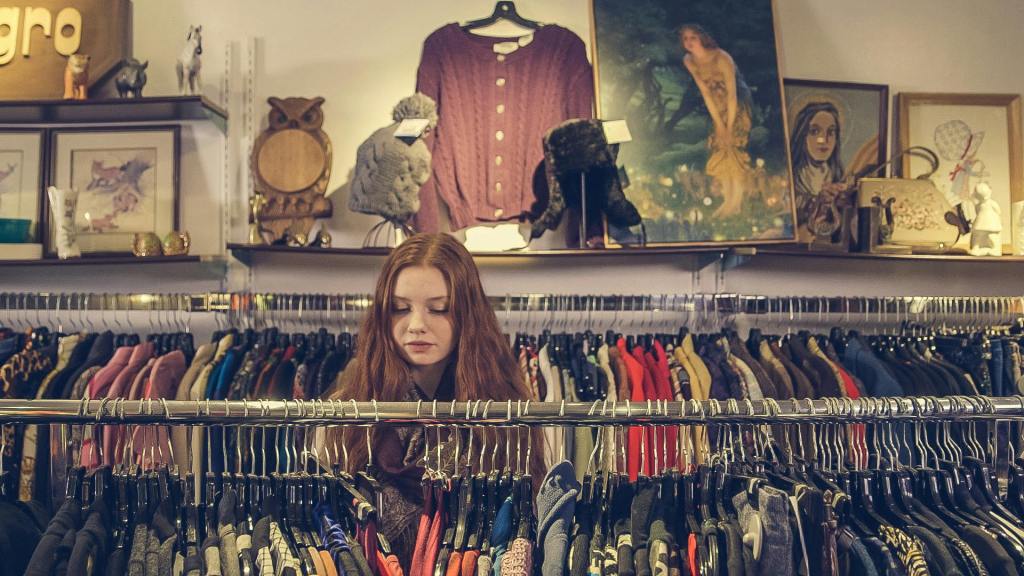
My journey with The Artist’s Way this week
I’m in the throes of edits for my novel, with a tight deadline, so it feels like my particular artist’s way is all about finishing my project right now, rather than sparking new inspirations. Morning Pages continue to be a welcome download of anxieties. I often find myself starting off with grumpiness and ending with gratitude, fired up for the day’s work.
I’ve been dipping into some books that are feeding my creative process: Lee Kofman’s superb writing memoir, The Writer Laid Bare, Rick Rubin’s concise and instructive The Creative Act and the novel my bookclub chose for this month, Big Swiss, by US writer Jen Beagin – bold and funny, Beagin reminds me to keep my own work pacy and fresh.
There’s a line from Rubin that struck me this week: ‘Art doesn’t get made on the clock. But it can get finished on the clock.’
As I enter the completion phase of my own project, I like Rubin’s statement that, ‘Although we avoid deadlines early in the process, in the completion phase, a due date could help bring time into focus and support you in completing the work.’
This reminds me of my partner David’s mantra, chanted at me whenever I complain about not having enough time to finish: ‘Enabling constraints. Enabling constraints can make the work stronger!’
My short Artist Date this week was a visit to the Melbourne Athenaeum Library, on Collins Street, right next to the ArtsHub office. I snuck in during my lunch hour, enjoying the odd, old-fashioned space inside the theatre. The library has been there since 1839, and carries an air of secrecy, like a private club. I’m considering paying the yearly membership fee so I can browse, borrow, and have tea and biscuits while I catch up on the latest Vogue magazine.
In the foyer, on the landing, I saw art on the wall and stopped to take it in – Hands In Print, by artist and sculptor Bridget Nicholson, commissioned in 2015. This wall features a collection of pencil sketches of the hands of esteemed Australian writers, including Graeme Base, David Malouf, Christos Tsiolkas and Kate Grenville, as well as some sculptures of hands, surrounded by pencil text.
I looked down at my own poor hands and tried not to hate them for being so veiny, bony and freezing cold with Raynaud’s Syndrome.
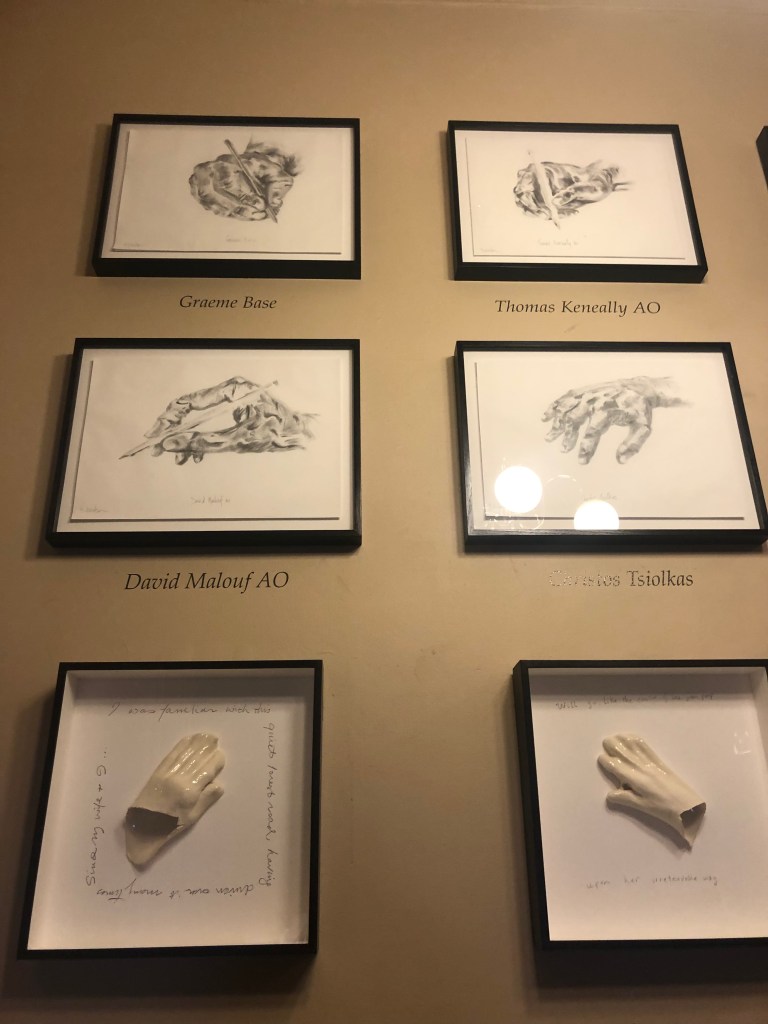
Finally, onwards, and keep on enjoying the process. Tell us how you’re going and what is changing – or not changing – as you open yourself up to abundance this week.
Next time, Week 7: Recovering a sense of connection, we will look at the practice of right attitudes for creativity and we’ll explore perfectionism, jealousy, risk-taking and listening.
Some Artist Date ideas
A few more suggestions from me and from our community, in case you’re finding it hard to think of Artist Dates.
- See some comedy or live theatre, especially a matinee.
- Visit an op shop or thrift store and see if you can find some little “luxury items” as per this week’s tasks.
- Go to an open home (or four) and see new decor, room layouts, architecture.
- Cook a new meal from a cuisine that’s different from what you normally eat. Note the aromas and flavours and do some research on the key spices or ingredients.
- Find a make-up tutorial and use your own face as a canvas. For example, I love Lisa Eldridge’s period costume make-up videos, like this one that combines cinema and make-up history. Eldridge’s intelligence and soothing voice is a pleasure even if you don’t do the make-up.
Other resources
- Revisit collage and other crafts from your childhood
- Check out ArtsHub Events listings with options in all states – activities including art exhibitions, theatre, dance, writing festivals.
- Visit ArtsHub‘s The Artist’s Way Community Facebook group to share your journey, connect with others and ask questions. We’d love to hear from you.

